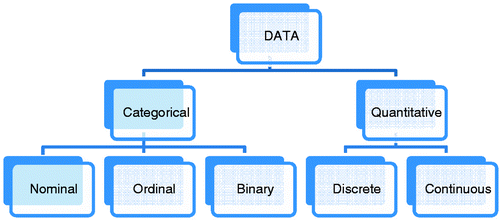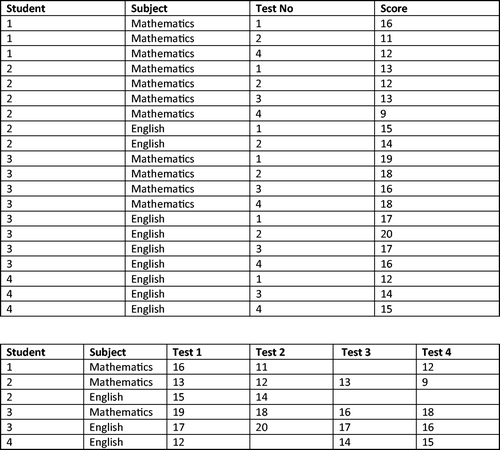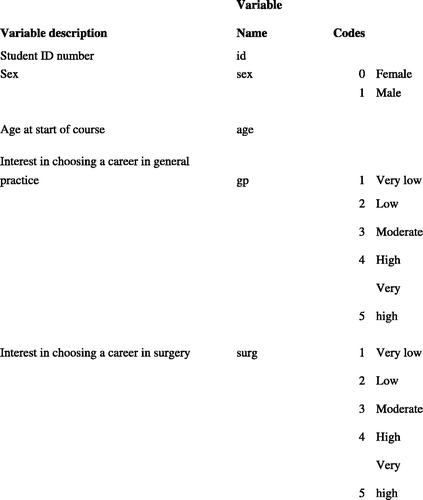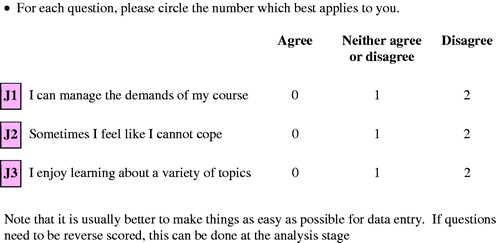Figures & data
Table 1. The difference between information and data
Table 2. Different types of categorical data
Table 3. Examples of quantitative data and categorical data
Box 1 Research paradigms
Table 4. An overview of some of the strengths and weaknesses of quantitative and qualitative research methods
Box 2 Choosing a database
Box 3 Handy hints
Box 4 Handy hint: Never mix text and numeric data
Box 5 ‘Rubbish in, rubbish out’ (RIRO)
Box 6 Eyeballing your data
Figure 6. The results of two student tests. (a) The best data descriptors will be mean and standard deviation as the distribution is symmetrical; (b) use median and range as the distribution is skewed.
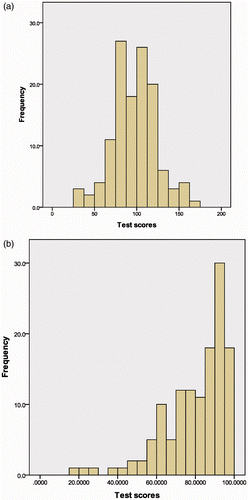
Box 7 The difference between a bar chart and a histogram
Table 5. Common uses for databases in undergraduate medical education
Box 8 Example of a quantitative research study (Cleland et al., 2008a)
Box 9 An example of transcribed data (from Cleland et al., Citation2008b)
Figure 7. An example of a coding page (Moffat et al. Citation2007).
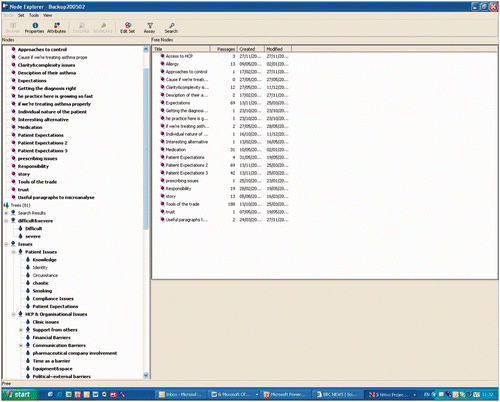
Box 10 Example of a qualitative research study (Cleland et al., 2008b)

